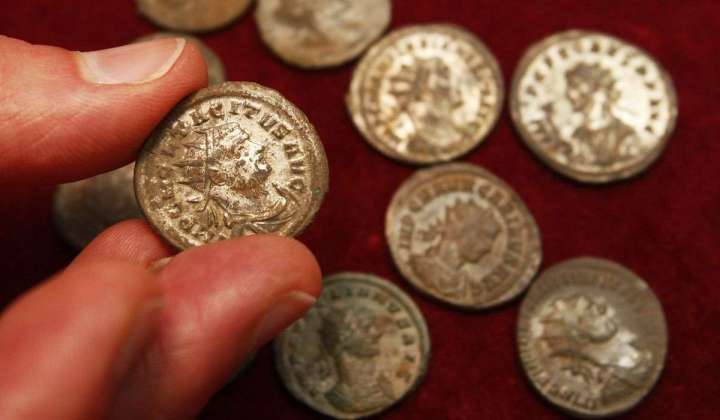Pair of 2nd-century Roman coins found on uninhabited Swedish island

A team of researchers found two silver Roman coins dating back to the 2nd century A.D. on the uninhabited Swedish island of Gotska Sandon, sparking speculation as to how they got there in the first place.
The two coins were minted at the height of Roman power — one in the reign of Emperor Trajan (98-117) and one in the reign of Antoninus Pius (138-161). Now, work has begun on figuring out exactly how the coins reached the small island in the Baltic Sea.
While caches of ancient coins have been found on the nearby island of Gotland to the south, Gotland is inhabited and renowned as a historical center of trade.
“Finds of Roman silver coins are not unusual on Gotland, but they are on Gotska Sandon,” Daniel Langhammer, an official with the administrative board of Gotland County, said in a release from Sodertorn University.
The March 2023 finds echo claims by 19th-century lighthouse keeper Hjalmar Soderberg of finding a Roman coin on the island, which had previously met with skepticism.
Theories to explain the more recent find abound.
Norse traders could have sought shelter on an island in a storm, or been shipwrecked while trading with the coins. The silver, no matter who ruled in Rome at the time, would have been a valuable good for trading.
Sodertorn University archaeologist Johan Ronnby, part of the team that found the coins, doubts it was one of the emperor’s own ships that traveled to the Baltic and left the coins behind.
“It’s not likely to be a Roman ship. But you have to consider also that the Romans were sailing up to Scotland and so on, and that there were Roman authors at that time writing about the Baltic area,” Mr. Ronnby told the website Live Science.
Classical Roman author Tacitus wrote his ethnographic work “Germania,” about the Germanic peoples living on the fringes of the Roman Empire in northern Europe, around the year 98.






